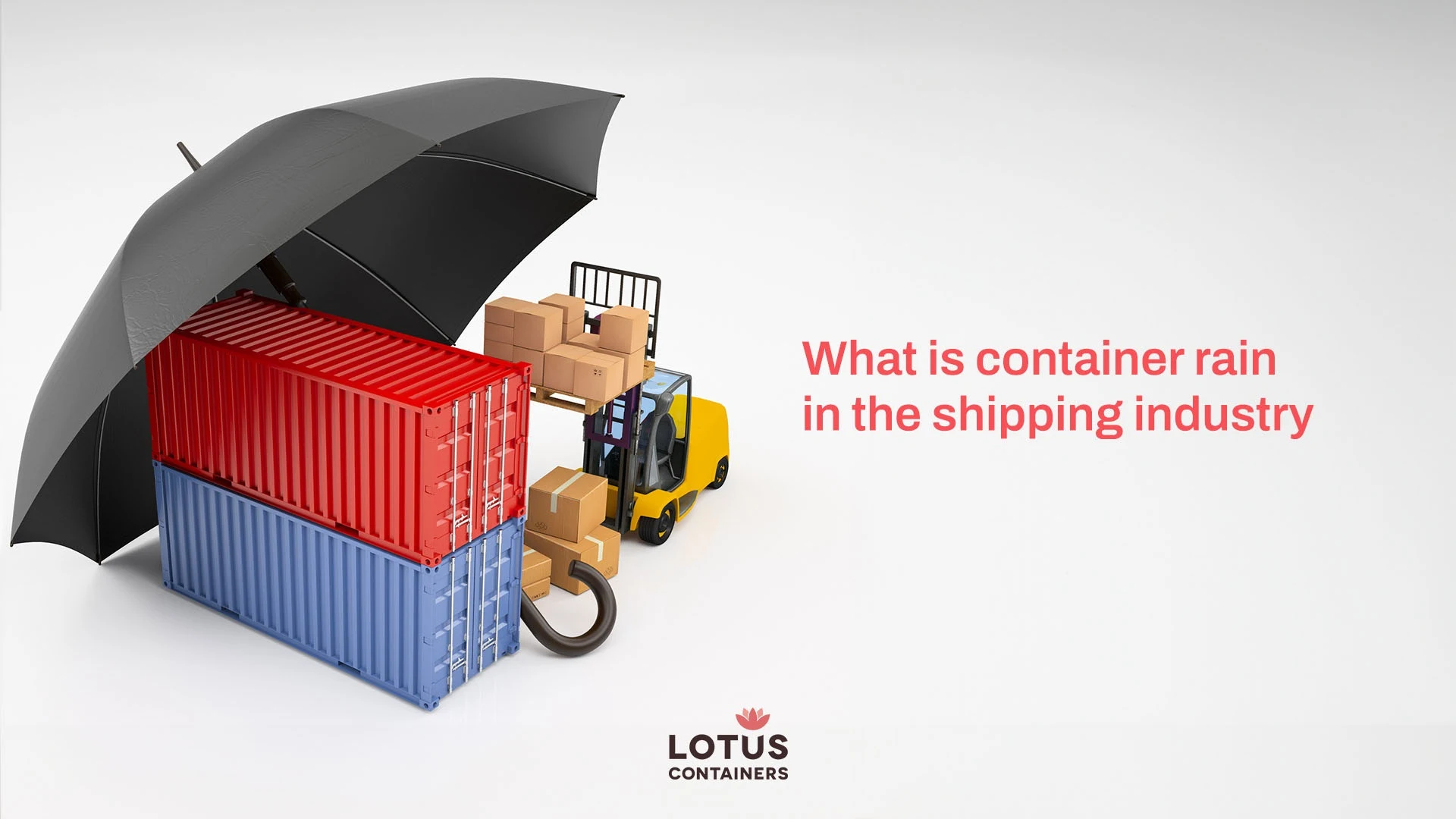What is container rain in the shipping industry?
What is the cause of container rain?
The shipping containers store and transport goods nationally and internationally through various modes of transport. Containers suffer the impact of intense weather conditions during their transit between different climatic zones. One such impact caused due to the external environment is container rain. It occurs when humid air gets trapped inside containers and, upon cooling, condenses to form water droplets due to weather fluctuations. These droplets expand and rise to the top, clinging to the walls of the roof whenever the container's temperature heats up. It then rains inside the container when these droplets fall, wetting the container and its shipment. It mainly occurs with containers used in the maritime industry where the moisture rate in the air is relatively high and temperature fluctuations between day and night are sudden. By following a few ways to prevent container rain, we can increase the lifespan of containers.
Impact of container rain
If humidity gets trapped inside the shipping container and is not removed immediately, it leads to container rain. This can impact the container in two significant ways-
Cargo damage - The droplets falling on the cargo packages can cause mold formation and a foul smell in the container and damage the cargo quality. Goods, including furniture, food products, and machinery, run heavier risks of getting spoiled beyond safe. It leads to significant losses for the shipper.
Container damage - Moisture inside the container can lead to rusting and corrosion, putting the container's integrity at stake. It results in more expenditure in performing maintenance and repairs and impacts the container's life as well.
How to prevent container rain
Container sweating can lead to shipment damage causing significant losses; therefore, it is essential to take precautions.
Choose the correct pallets - Wooden pallets have a higher moisture retention capacity and can hold them for a significant amount of time, damaging the container. Plastic pallets can be used as alternatives to wooden ones as they are impermeable and cannot absorb moisture.
Wrapping up in plastic - The goods are often packed into cardboard boxes and loaded into containers. The boxes can absorb moisture and cause mould formation, damaging the cargo. If appropriately wrapped in plastic films, the goods have higher chances of preventing cargo damage.
Drying agents - Desiccants are hygroscopic substances that can be used to regulate the relative humidity of the container environment. It becomes difficult to avoid container rain in places with higher moisture levels in the air. These drying agents are packed into bags, packets, or sachets and hung inside the containers to absorb the moisture in the air.
Insulate the container - Insulation helps maintain the container's internal conditions and keep it optimum, avoiding sudden temperature fluctuations. It helps prevent moisture retention that would later condense to cause container rain.
Use of ventilators or dehumidifiers - Regular ventilation helps maintain the internal and external environment of the container. But it is challenging to keep ventilating the containers during transit. In such cases, dehumidifiers are an excellent resource for helping remove any humidity locked inside the container.
Container rain is one of the potential reasons for cargo damage and loss of container health during transit. Shipping companies must take necessary steps to avoid the loss of millions worth of cargo.
LOTUS Containers is a stellar marketer of shipping container solutions across the globe. We provide durable shipping containers of different types and sizes.



Comments